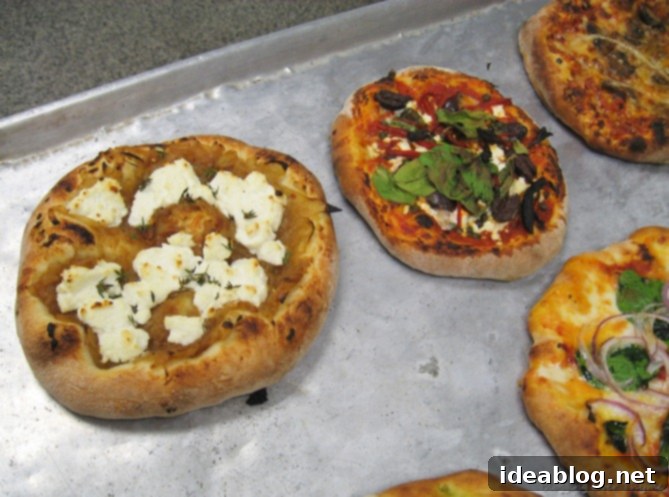Culinary Adventures: Mastering Homemade Pizza, Fried Eggplant, and Exquisite Charlotte Royale Cakes
Wednesday in our culinary class was an absolutely delightful and incredibly fun experience! Officially dubbed “Pizza Day,” it truly lived up to its name, offering us a wonderful opportunity to unleash our creativity and enjoy a relaxed yet highly productive session in the kitchen. The foundation for our pizza feast began the previous afternoon when we meticulously prepared our pizza dough. This wasn’t just any dough; it was carefully mixed and then left to rest, relax, and ferment overnight. This crucial step is vital for developing complex flavors and achieving that perfect, airy, yet chewy crust that distinguishes truly exceptional homemade pizza from the ordinary. The extended fermentation allows the yeast to work its magic slowly, breaking down starches and producing aromatic compounds that enhance both the taste and texture of the final product, ensuring our pizzas would be nothing short of spectacular.
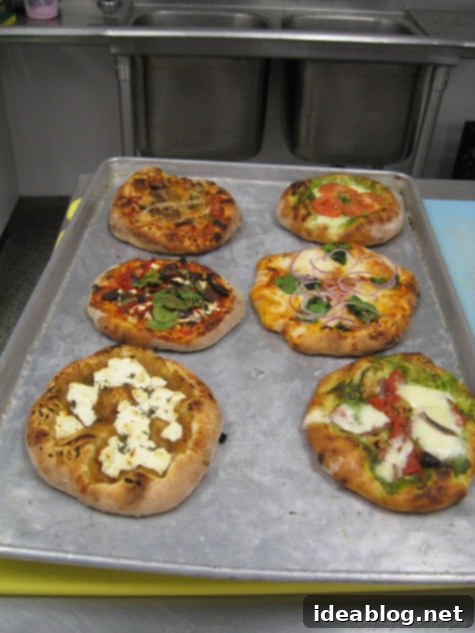
As Wednesday morning arrived and we stepped into the bustling classroom, the air was thick with anticipation. Each student was assigned individual work tables, transforming our kitchen into a vibrant hub of culinary activity. Our first task was to take responsibility for assembling a diverse array of toppings and options, ensuring every individual pizza could be a unique masterpiece. Some tables focused on crafting homemade sauces, including a vibrant tomato sauce and a fragrant pesto, alongside preparing a tantalizing selection of cheeses, from creamy mozzarella to sharp parmesan and tangy goat cheese. Other stations were dedicated to an impressive variety of meat toppings, such as spicy pepperoni, savory sausage, and smoked ham, while others painstakingly chopped and prepared an abundance of fresh vegetables like bell peppers, onions, mushrooms, and olives. This collaborative effort ensured a veritable feast of choices, catering to every palate and inspiring endless creative combinations for our custom pizzas.
Beyond the realm of pizza, our class also ventured into preparing a delectable side dish: **fried eggplant**. These weren’t just any fried eggplants; they were meticulously prepared batons of eggplant, breaded to perfection and then fried until golden and crisp. Served with a simple yet flavorful homemade tomato sauce, they were an absolute revelation. The careful preparation resulted in an interior that was incredibly creamy, almost melting in your mouth, providing a delightful contrast to the crispy exterior. This dish was not only exceptionally delicious but also remarkably straightforward to put together, proving that sometimes the simplest preparations yield the most satisfying results. The natural sweetness of the eggplant, coupled with the savory breading and bright tomato sauce, made it an instant favorite and a perfect complement to our pizza spread.
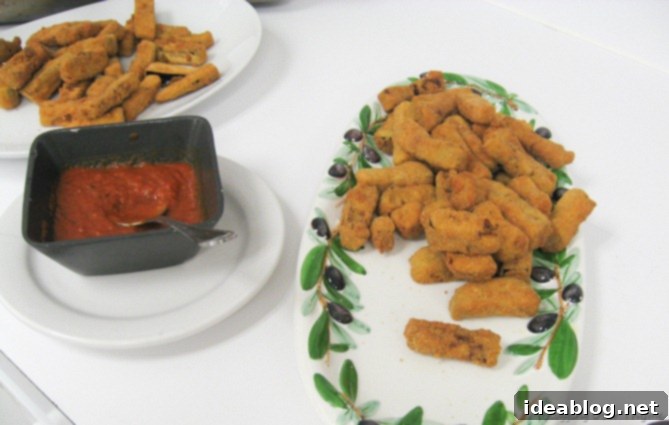
With all our diverse toppings prepped and ready – and with virtually free rein to select anything we desired from the well-stocked commissary – it was time to get down to the exciting business of assembling our pizzas. Each of us had the opportunity to craft a generous total of **six small, individual pizzas**, utilizing the perfectly fermented dough we had prepared the day before. This abundance of dough provided ample chances for experimentation and creativity, allowing us to try out a multitude of flavor combinations and design unique culinary creations. From classic Margherita styles to more adventurous gourmet interpretations, the possibilities were limitless. We focused on techniques like achieving an even sauce spread, distributing toppings thoughtfully for balanced flavor in every bite, and ensuring the crust edges were perfect for optimal rise and crispness in the oven. This hands-on approach to creating multiple pizzas really honed our skills in balancing ingredients and designing visually appealing dishes.
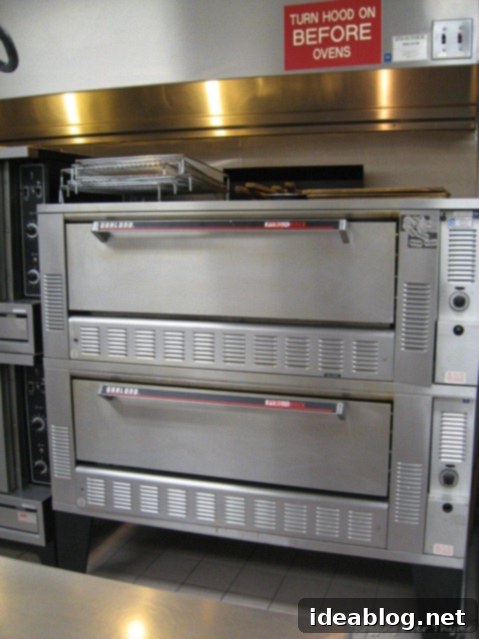
To cook our masterpieces, we utilized the impressive and massive **deck ovens** located in the Phase II classroom. These professional-grade ovens are true workhorses, capable of reaching scorching temperatures up to 650 degrees Fahrenheit. The intense, consistent heat generated by a deck oven is absolutely crucial for achieving the perfect pizza crust – one that is beautifully crisp on the bottom, with a delightfully chewy interior and slightly charred, blistered edges, all in a matter of minutes. Since the Phase II students weren’t using their classroom at the time, we also took the initiative to set up their entire space, meticulously arranging everything to make our pizza-making process as smooth and efficient as possible. This included organizing prep areas, staging our raw pizzas, and ensuring easy access to tools for transferring them to and from the fiery depths of the ovens. Working with such high-caliber equipment not only enhanced the quality of our pizzas but also provided invaluable experience in a professional kitchen environment, teaching us the nuances of managing high temperatures and rapid cooking times, which are essential skills for any aspiring chef.
Despite the initial excitement and myriad of topping options, by the time I was assembling my fifth and sixth pizzas, I confess I was almost starting to run out of fresh ideas! The challenge quickly became less about what to put on, and more about finding novel combinations that truly stood out from the others I had already crafted. It pushed me to think more critically about flavor profiles and textural contrasts, ensuring each of my six pizzas offered a distinct culinary experience. This unexpected creative hurdle ultimately led to some of my most interesting creations of the day, proving that sometimes, being pushed to your limits can result in surprisingly innovative outcomes in the kitchen. It was a testament to the fact that even with seemingly endless choices, thoughtful planning and a bit of playful ingenuity can elevate a simple pizza into a gourmet delight.
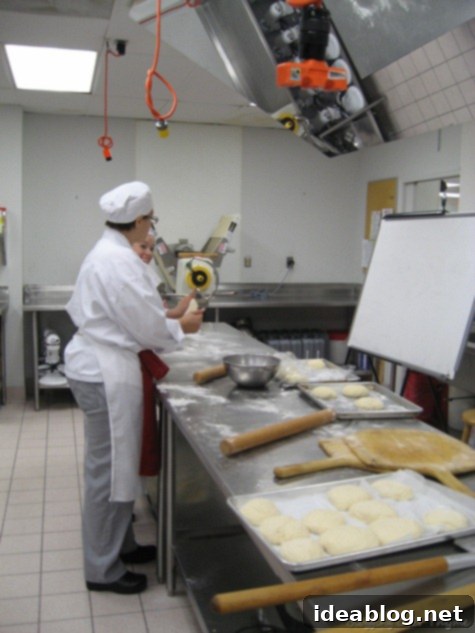
From the variety of pizzas I created, I’m particularly proud to share details of two of the six, which are shown below. The pizza on the **left** was a sophisticated blend of flavors, featuring sweet and deeply savory caramelized onions, tangy and creamy goat cheese, and fragrant fresh thyme leaves. This combination offered a delightful balance of earthy sweetness, rich dairy, and herbal notes that truly elevated the humble pizza into something special. The careful caramelization of the onions brought out their natural sugars, providing a wonderful contrast to the sharpness of the goat cheese, while the thyme added a fresh, aromatic finish that tied all the elements together beautifully. It was a testament to how simple, high-quality ingredients can create an incredibly complex and satisfying flavor profile.
The pizza on the **right** was a vibrant, Greek-inspired creation bursting with Mediterranean flavors. It was generously topped with salty feta cheese, briny olives, sweet roasted red peppers, fresh spinach, pungent capers, and a sprinkle of fiery red hot pepper flakes for a subtle kick. This pizza was a lively explosion of tastes and textures, from the creamy brininess of the feta and olives to the soft sweetness of the peppers and the slight bitterness of the spinach. The capers added a distinctive savory pop, while the chili flakes provided just enough heat to awaken the palate. I also drew inspiration from my memorable trips to Two Amy’s, a renowned pizzeria downtown, and attempted a more experimental pizza featuring mussels, capers, and red hot pepper flakes. While it didn’t quite reach the perfection of my other creations, it was far from a horrible attempt and certainly a valuable learning experience in exploring unconventional pizza toppings. It encouraged me to continue pushing the boundaries of traditional pizza making, reminding me that every culinary experiment, successful or not, contributes to growth and understanding.
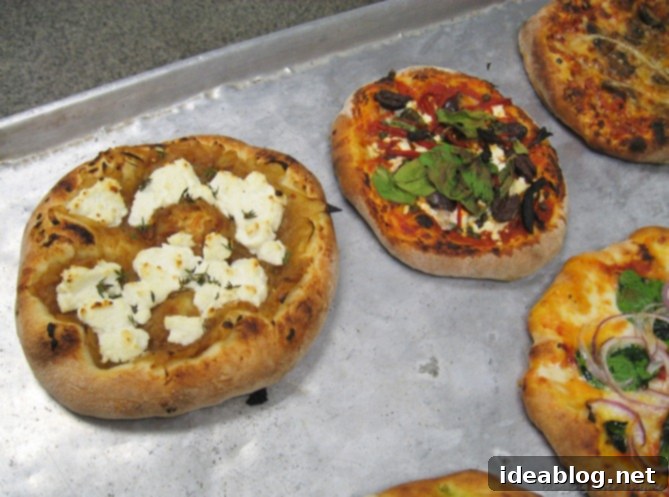
Once all our pizzas emerged perfectly cooked from the high-temperature ovens, they were proudly arranged buffet style, transforming our classroom into a vibrant lunchtime feast. This communal setup allowed us to not only savor small slices of our own culinary creations but also to indulge in the diverse and imaginative pizzas crafted by our classmates. It was a truly enjoyable and interactive way to conclude our “classroom week” at school, fostering a sense of camaraderie and appreciation for each other’s efforts and unique palates. The sharing of food created a lively atmosphere, with students enthusiastically discussing flavor combinations, crust textures, and baking techniques. It was a moment of collective satisfaction, celebrating the delicious results of our hard work and creativity throughout the morning. This buffet style lunch truly encapsulated the spirit of collaborative learning and the joy of food shared among friends.
For dessert, we transitioned from savory delights to a sweet masterpiece: the elegant **Charlotte Royale cakes**. These stunning desserts are meticulously constructed using colorful roulade cake slices, which are then filled with a rich and velvety Bavarian cream. The Bavarian cream itself is a luxurious concoction, essentially a crème anglaise (lightened with gelatin for stability) expertly folded with freshly whipped cream to achieve a light, airy, yet incredibly luscious texture. Conveniently, we had **also** assembled these intricate cakes at the end of Tuesday’s class, allowing them ample time to set overnight in the refrigerator, making them perfectly ready to be enjoyed as the grand finale of our Wednesday feast. This forward planning showcased another aspect of professional kitchen management, where timing and preparation are key to delivering exceptional results.
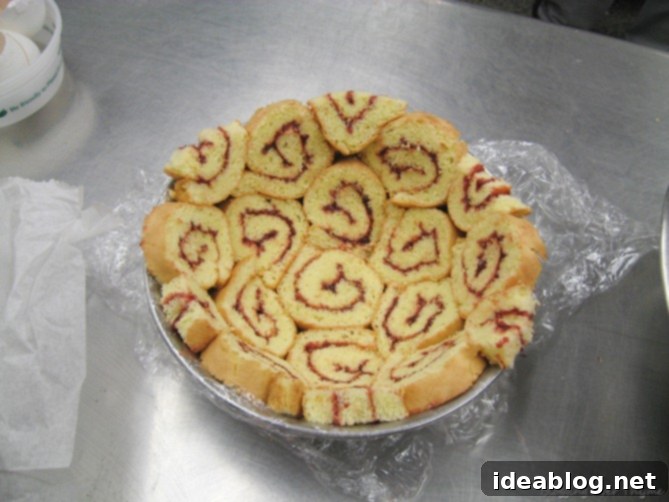
At first glance, the Charlotte Royale appears to be an incredibly difficult cake to assemble due to its intricate design. However, as we discovered, the process is actually quite straightforward, provided it’s executed with precision and care. To construct this beautiful dessert, we began by thinly slicing fresh roulade (sponge) cake that had been generously filled with vibrant raspberry preserves. These colorful slices were then meticulously arranged, tightly packed together in a plastic-wrapped bowl, forming a decorative outer shell. Once the roulade structure was perfectly in place, we carefully filled the interior with the creamy Bavarian cream, ensuring every nook and cranny was filled. The entire assembly was then allowed to chill and set in the refrigerator overnight, allowing the flavors to meld and the cream to firm up, resulting in a cohesive and visually stunning dessert. The key to its success truly lies in the methodical layering and chilling, transforming individual components into a harmonious whole.
The trickiest part of assembling the Charlotte Royale, without a doubt, is ensuring that you tightly pack the roulade slices against each other and the bowl. This meticulous packing is absolutely critical to prevent the luscious Bavarian cream filling from spilling out or seeping between the cake layers, which would compromise the pristine presentation of the dessert. Even a small gap can lead to an imperfect finish, diminishing the elegant aesthetic. Among our class, Hannah was the only one who managed to execute hers with absolute perfection, creating a flawless, seamless exterior. The rest of us, myself included, experienced small cracks or slight imperfections in our roulade slices, which, while not affecting the taste, made our cakes not quite as visually impeccable as Hannah’s. It was a valuable lesson in precision and the challenges of intricate dessert plating, highlighting the importance of careful execution in achieving culinary artistry.
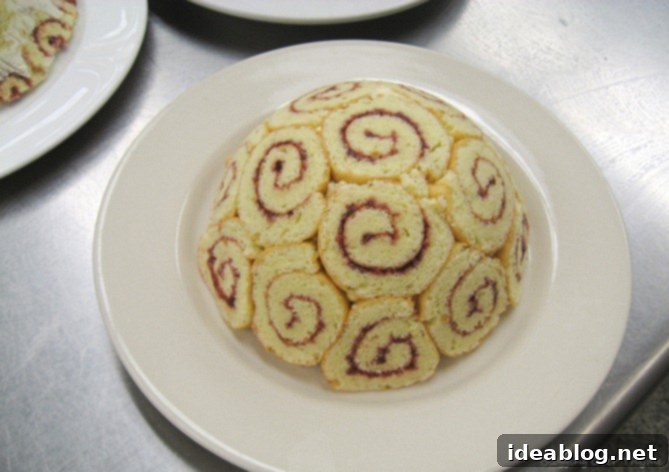
Once again, this dessert proved to be another excellent example of a dish that initially sounded a bit unconventional to me before I actually tasted it. “Gelatin crème anglaise as a filling?” I pondered, “That sounds a bit odd!” However, the moment I took a bite, experiencing the harmonious combination of the filling and the delicate sponge cake together, I was genuinely surprised by how truly delicious it was. The Bavarian cream, with its unique texture derived from the gelatinized crème anglaise, was almost pudding-like in consistency, yet still incredibly light. This luxurious, creamy texture contrasted beautifully with the soft, airy sponge cake and the tart sweetness of the raspberry preserves, creating a multi-faceted sensory experience. Beyond the exquisite taste, I was also captivated by the fact that these cakes are **so** incredibly pretty to look at! Their vibrant colors and intricate design make them a feast for the eyes as much as for the palate, perfectly embodying the artistry involved in high-level pastry making. It was a delightful discovery, reminding me to always approach new culinary experiences with an open mind.
Overall, Wednesday was a truly enjoyable, laid-back, and incredibly fulfilling day, providing a perfect end to our week of intense classroom learning before we embarked on our exciting field trip the following day. It was a day filled with creativity, collaboration, and delicious discoveries, solidifying many of the culinary techniques we had been practicing. I have many more pictures and fascinating details to share about *that* unforgettable field trip, but those adventures will have to wait for a future post! Stay tuned for more insights into our ongoing culinary journey and the exciting places it takes us. We are continuously learning, growing, and expanding our palates and skills, and I can’t wait to share all of it with you.
Have a great weekend everyone!
